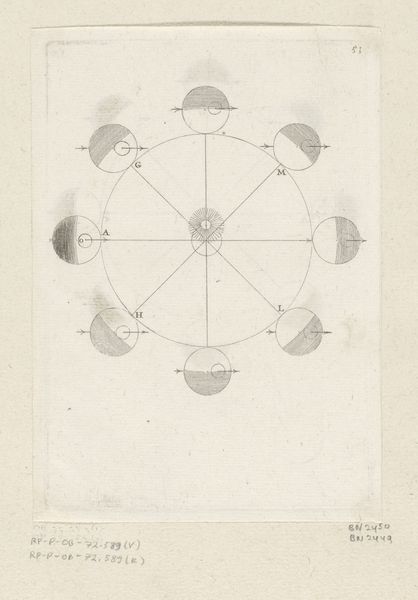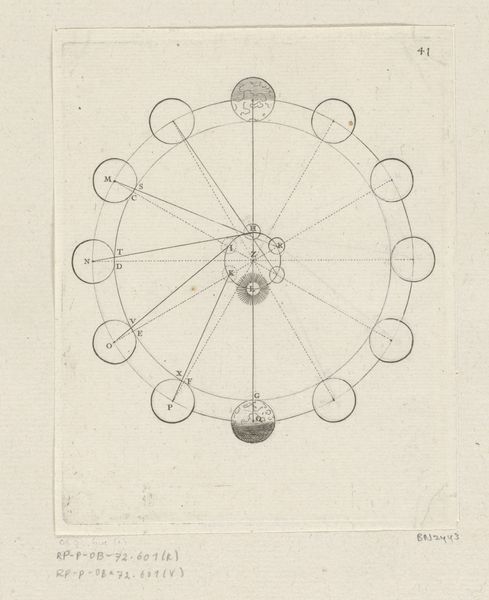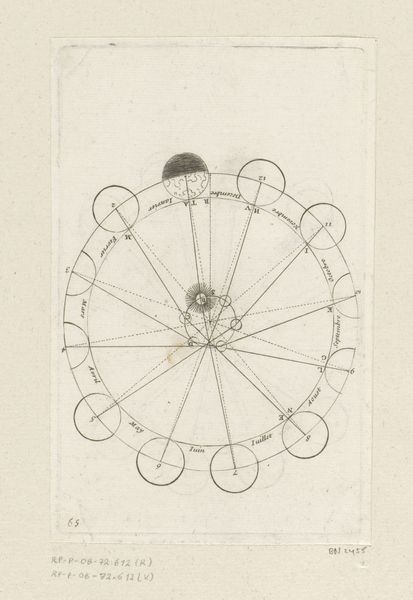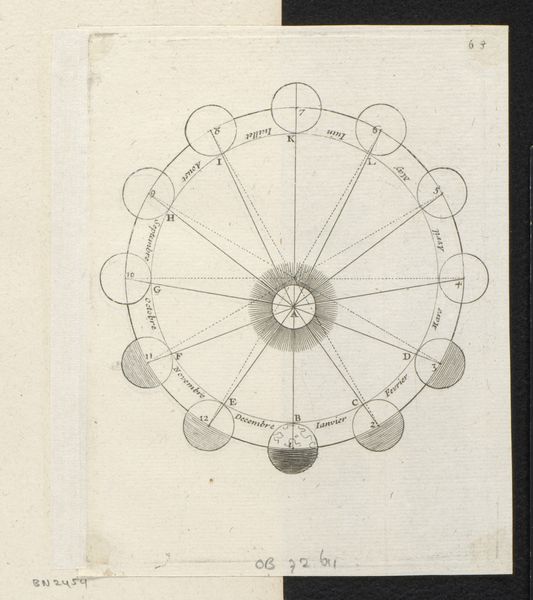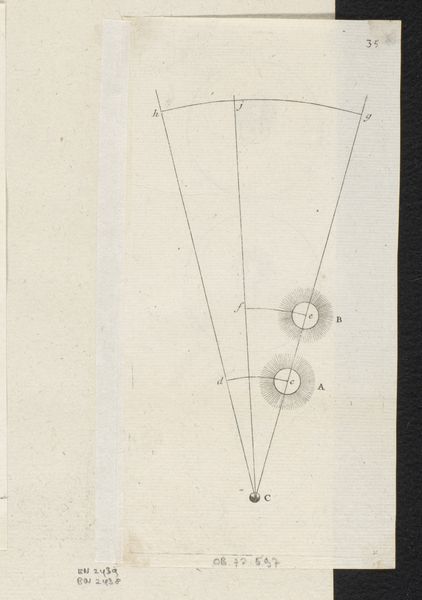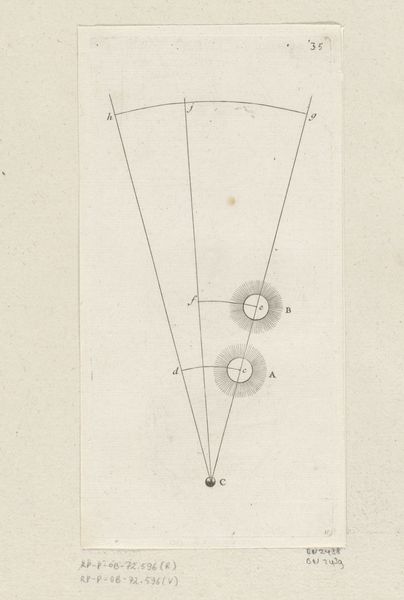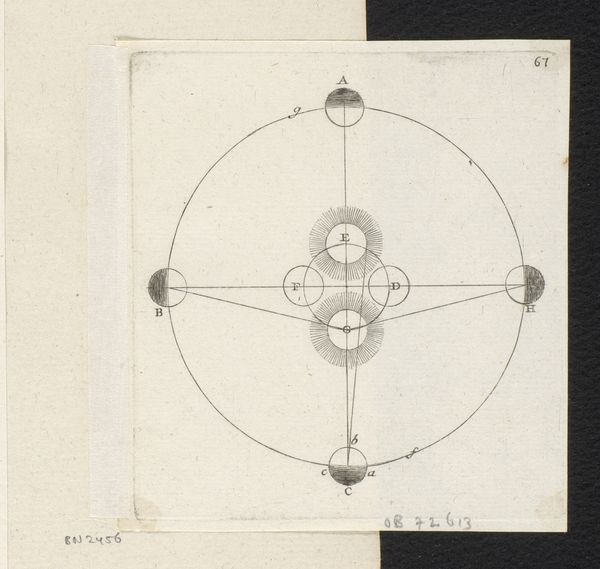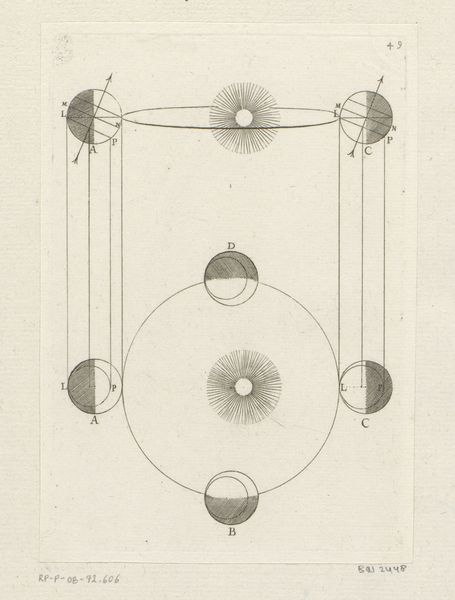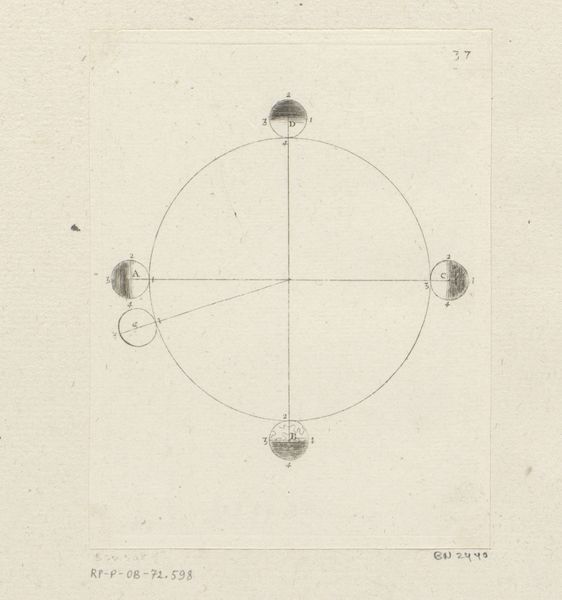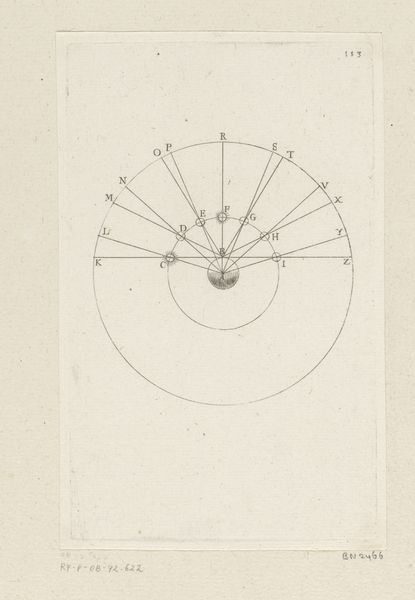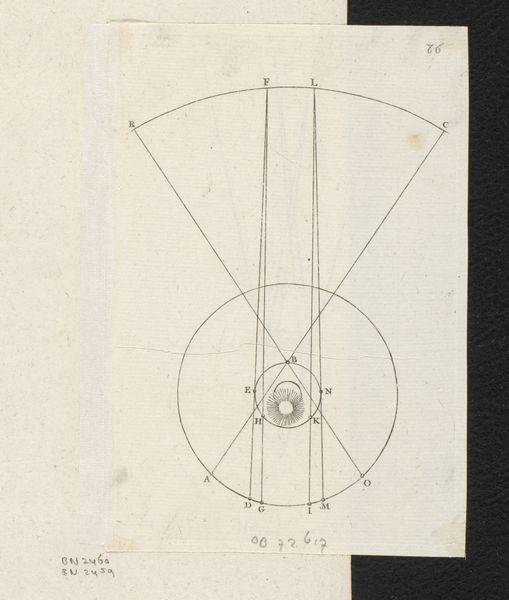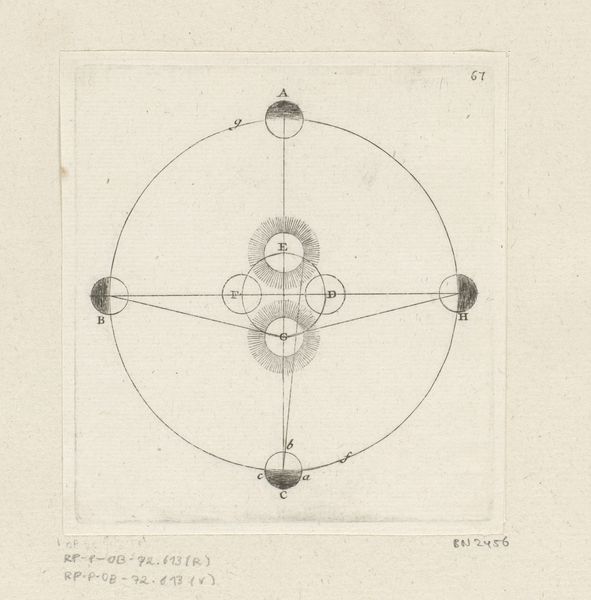
Beweging van de Aarde rond de Zon en de evolutie van de dagen en nachten 1706
0:00
0:00
print, engraving
#
baroque
# print
#
geometric
#
line
#
history-painting
#
engraving
Dimensions: height 160 mm, width 119 mm
Copyright: Rijks Museum: Open Domain
Curator: This engraving by Sébastien Leclerc I, created in 1706, is titled Beweging van de Aarde rond de Zon en de evolutie van de dagen en nachten, which translates to "Movement of the Earth around the Sun and the evolution of day and night." It’s part of the Rijksmuseum's collection. Editor: My first impression is one of scientific curiosity mingled with a sort of antique elegance. The stark lines and simple shading evoke a sense of age and a very particular way of understanding the cosmos. There's an almost mystical quality to it, even though it's meant to be representational. Curator: Absolutely, and looking at this image, I'm immediately drawn to how it reflects the tension between established cosmological views and the emerging scientific revolution. The diagrammatic representation reveals a society grappling with new understandings of our place in the universe. Remember, the shift from a geocentric to a heliocentric model had huge social and political implications. Editor: Precisely. It reminds me of alchemical diagrams. Circles, lines, radiating sun...these are enduring symbols. It’s as if the engraver is striving to capture not just a scientific truth but a fundamental cosmic order. What's also fascinating is how light and darkness are visualized, almost as characters, perpetually chasing each other across the globe. You can see in the shading a very evocative expression of natural forces. Curator: I see your point about light and darkness; however, beyond the symbolic representation, there's a clear political dimension here. Visualizing and disseminating this new knowledge empowers individuals, challenging the power structures of the time where understanding the cosmos was often reserved for a select few. It's not just science; it's access and knowledge as power. Editor: It also serves as a mirror, in a sense. In contemplating our world's relation to the sun, viewers of the era could better understand their own limited perspective, perhaps mirroring enlightenment ideals around personal understanding. It's the perfect reminder of how symbols and ideas evolve together. Curator: Looking at it from that view makes me feel a renewed appreciation of the role of science and art in shifting perspectives, especially as our narratives become entrenched. Editor: For me, it's more about how timeless these symbols remain – sun, earth, light – continuing to illuminate human thought across centuries.
Comments
No comments
Be the first to comment and join the conversation on the ultimate creative platform.

